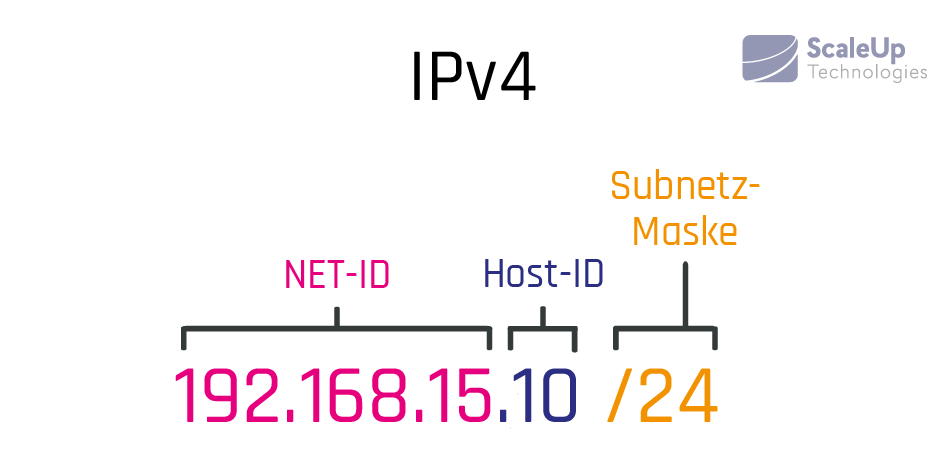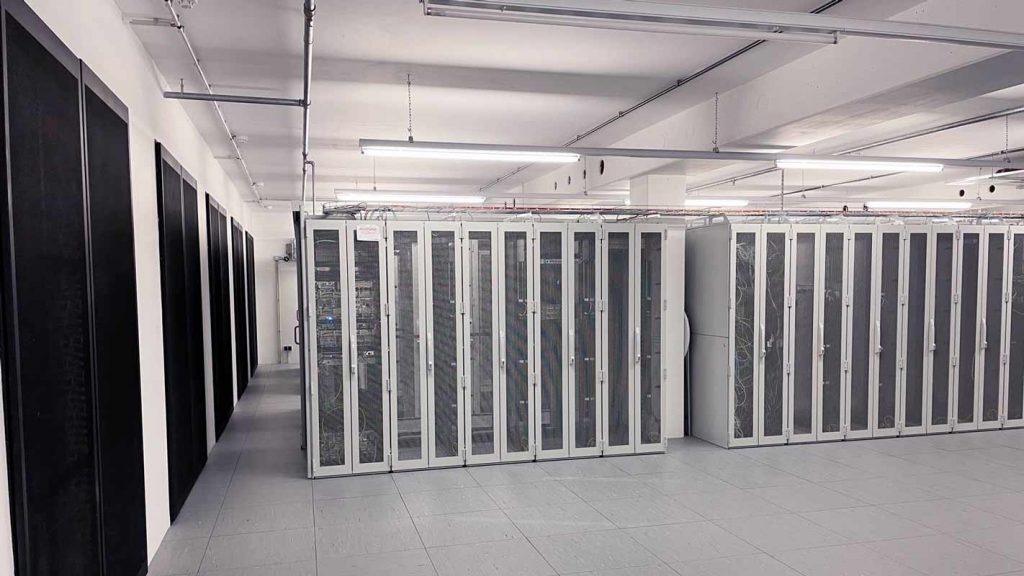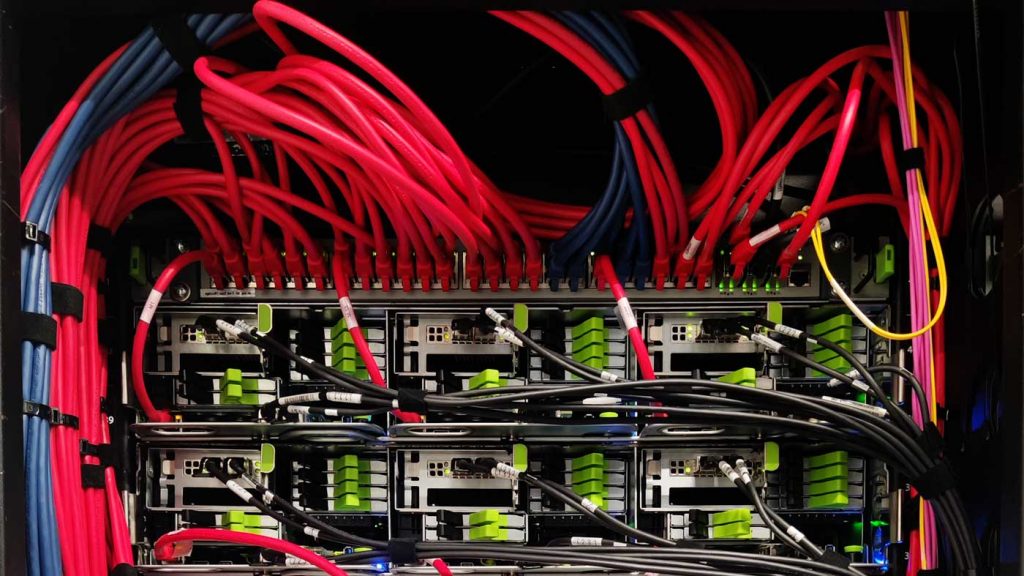We communicate every day with the help of IP addresses, but as non-IT people we know very little about them. Without Internet protocols, however, data exchange over the Internet would not be possible. Many exciting areas such as interconnection, Internet of Things (IoT) and edge computing would also be inconceivable without the new IPv6 standard. It is therefore worth taking a closer look at Internet protocols, if only to be able to configure your router at home yourself. In our article, we explain the differences between the two Internet protocols and go into the advantages offered by the new IPv6 standard.
Important definitions
Internet protocols
Internet protocols enable the switching of data packets in a decentralized and packet-oriented network (so-called "routing"). The addressing of the data packets works via an IP address in connection with the subnet mask. An IP address is a unique sequence of numbers assigned to each device in a TCP/IP network. All network participants therefore have their own IP address.
Static and Dynamic IP Addresses
A distinction is made between "Static IP address" and "Dynamic IP address". Static IP addresses are set manually because they do not actually have to be changed again afterwards. For example, servers receive a static IP address from the Internet Service Provider (ISP) because they must be permanently accessible.
Normal computers and PDAs, on the other hand, are assigned dynamic IP addresses because they do not have to be permanently reachable. Dynamic IP addresses are assigned automatically by a DHCP server. DHCP stands for "Dynamic Host Configuration Protocol" and is used to manage IP addresses in a TCP/IP network and distribute them to the requesting hosts. With DHCP, each IP host can request the IP address configuration from a DHCP server and configure itself automatically. When the PC is rebooted, the dynamic IP address from the PC can change accordingly. The request starts automatically as soon as a DHCP server or router is available for this computer.
IPv4 vs. IPv6
Currently, two variants of IP addresses exist (IPv4 and IPv6). The 32-bit IPv4 address is represented by four quartiles, i.e. decimal numbers separated by dots (e.g. 192.168.13.1), while IPv6 is a much larger 128 bits long and contains letters (a-f) in addition to numbers (0-9). On IPv4 we are in our Subnetting article has already been discussed in more detail. In this article, we want to take a closer look at the newer Internet protocol IPv6.

The new IPv6 standard has also been made available to end users in Germany since World IPv6 Day 2011. However, the specifications were already finalized in December 1998 in RFC 2460.
IPv6 appears to be much more complex than IPv4 (e.g. 2001:0db8:85a3:0000:8a2e:0070:7334) due to its eight-member hexadecimal notation, but it can be simplified by rules. For the example just given, 2001:db8:85a3::8a2e:70:7334 would be a shorter notation, since zeros can be omitted at the beginning of a block or for the entire block. Roughly speaking, the first 64 bits in IPv6 determine the network address, similar to the Net-ID in IPv4, and the trailing 64 bits determine the Extended Unique Identifier (EUI-64TM), which is comparable to the IPv4 Host-ID.

As we already know, the IPv4 protocol provides for a maximum size of 32 bits for its IP addresses. This results in about 4.2 billion available combination possibilities for IP addresses: Two raised to the power of 32 bits (232). That sounds like a lot at first, but in fact the maximum number of IPv4 addresses has already been used up for several years. This is because the number of existing servers and end devices is increasing rapidly. For this reason, the IPv6 protocol was introduced in 1999. With its 128 bits, the new IPv6 standard has a scope of about 340 sextillion IP addresses. That is a number with 36 (!!) zeros. This number is difficult to measure, so for comparison: the earth has a surface area of about 5.114 mm2. Every grain of sand on earth could get its own IP address with IP46 and there would still be some left. So we won't run out of IPs again so quickly. The change from IPv4 to IPv6 is taking place steadily, but slowly, because a large proportion of old hardware is still connected to the network via IPv4. However, the introduction of the IPv6 standard brings other advantages in addition to sufficient IP addresses for all end devices and IoT. We will discuss these advantages in more detail in the following section.
Advantages of IPv6
More efficient routing
IPv6 reduces the size of routing tables and makes routing more efficient and hierarchical. With IPv6, the prefixes of ISP customers' networks are combined into a single prefix. The one prefix is then advertised on the IPv6 Internet, reducing the size of routing tables outside the gate. In addition, in IPv6 networks, the Subnetting, i.e. the fragmentation, is processed by the source device and not by the router.
More efficient package processing
The simplified packet header of IPv6 makes packet processing more efficient. Compared to IPv4, IPv6 does not include a checksum at the IP level, so the checksum does not need to be recalculated at each router hop. In addition, most transport layers that handle end-to-end connectivity have a checksum to enable error detection. However, the IPv6 header has a negative impact on Ethernet connections due to higher bandwidth consumption. For VoIP, 15-30 percent more bandwidth should be planned.
Directed data flows
On the other hand, IPv6's multicast support has a positive effect on network bandwidth. Unlike broadcast, multicast allows bandwidth-intensive data packet flows (such as multimedia streams) to be sent to multiple destinations at the same time, saving a great deal of network bandwidth. Disinterested hosts no longer have to process broadcast packets. In addition, the IPv6 header has a new field called Flow Label that can be used to identify packets that belong to the same flow.
Simplified network configuration
Automatic address configuration (address assignment) is already integrated in IPv6, as already mentioned. A router sends the prefix of the local connection in its router advertisements. A host can generate its own IP address by appending its MAC address (link layer), converted to the 64-bit Extended Universal Identifier (EUI) format, to the 64 bits of the local connection prefix. Thus, with IPv6, the IP configuration does not actually require a DHCP service. For this, there is Stateless Address Autoconfiguration (SLAAC).
Support for new services
By eliminating NAT (Network Address Translation), true end-to-end connectivity is restored at the IP layer, enabling new, valuable services. Peer-to-peer networks are easier to create and maintain, and services such as VoIP and Quality of Service (QoS) become more robust.
Security
IPSec, which provides confidentiality, authentication, and data integrity, is built into IPv6. Because of their potential to carry malware, IPv4 ICMP packets are often blocked by corporate firewalls. However, ICMPv6, the implementation of the Internet Control Message Protocol for IPv6, may be allowed because IPSec can be applied to the ICMPv6 packets.
Why is IPv6 adoption delayed?
According to Google, the IPv6 adoption rate at 20-22 % worldwide. In the USA, the figure is 32%. According to the World IPv6 Launch, 30% of the Alexa Top 1000 websites are currently accessible via IPv6. The "State of IPv6 Deployment 2017. report cites complexity, cost and time as the most commonly cited reasons by organizations not yet deploying IPv6. In addition, some projects have been delayed due to software compatibility.
Conclusion
In summary, IPv6 has brought many improvements to IPv4. The IPv6 protocol can process packets more efficiently, improve performance, and enhance security. Internet service providers can use it to reduce the size of their routing tables by making them more hierarchical.
ScaleUp is a business hosting company with 20 years of hosting experience. We operate state-of-the-art colocation and server housing space as well as cloud infrastructures based on OpenSource technologies (OpenStack, Kubernetes) at a total of 6 data center locations in Hamburg, Berlin and Düsseldorf. We are happy to assist you available for queries.



